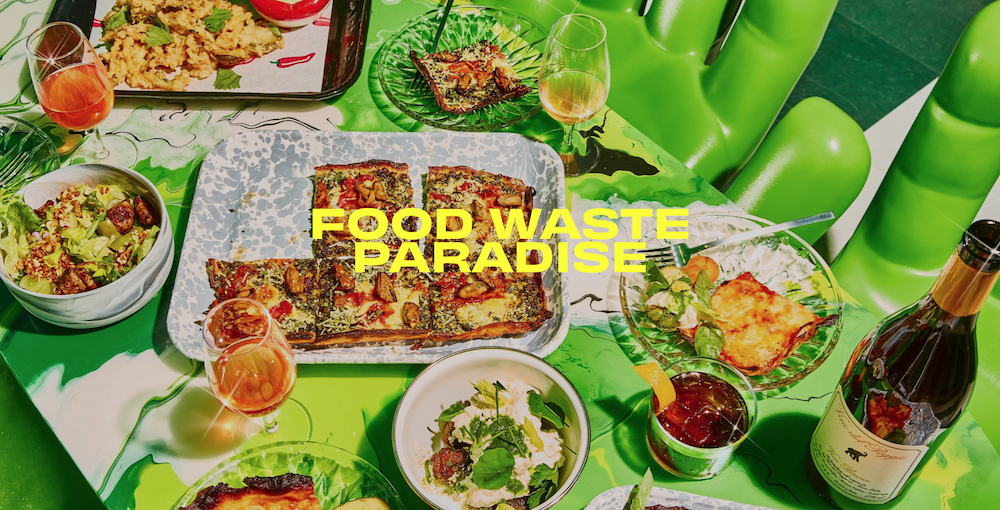Waste Not. Want More.
Double Trouble: Food Demand is Rising AND Food Waste is Increasing
INCREASING FOOD DEMAND
If we are to meet the food/calorie needs of the expected 10 billion people on earth by 2050 we will need to increase food production by more than 50% to create the necessary 7,000 billion additional calories each year. To achieve that level of food production, we would need to create additional farmland “taken” from forests, savannah’s and wetlands equal to about the size of India. Oh, and the global environmental commitments made at the Glasgow climate conference requires all participating nations to halt deforestation by 2030.
It seems we have a massive conflict on the horizon. The great challenge of our time over the next 25 years will be to produce enough food for a growing population, while simultaneously decreasing carbon emissions and preserving the planetary carbon sinks that are currently working to sequester greenhouse gases. Whew!
Of course science is quickly looking into expanding solutions to our food demand challenges.
One direction is shifting more calories away from animal protein toward plant based source. While some industry experts predict the the worldwide plant-based meat industry to surpass $33 Billion by 2031, recent press about Beyond Meat, Impossible Foods and other global plant-based meat brands shows that demand is beginning to decrease.
Another technology based solution to our food supply is beginning to attract large investors - Lab-Grown Meats. Meat grown from actual animal cells is likely the next evolution for our species’ consumption of meat. A significant number of startup with unique offerings are hitting the market. One lab will soon be offering Tiger, Zebra, Elephant steaks. Another suggests that Mammoth “heme” offers a superior taste and health benefits. Still another is producing lab-grown meats grown from air.
Still other solutions seek to more efficiently utilize the foods we already consume. Take bananas, for instance. Globally, bananas represent 16% of the world’s fruit production with approximately 119.83 million tons produced worldwide. Banana peels represent 30% - 40% of each banana’s weight which is a whole lot of waste. According to an article in Forbes, these peels are super “rich in protein, dietary fiber, vitamin C, vitamin A, calcium, iron, essential amino acids, polyunsaturated fatty acids, antioxidants and potassium.” So, instead of tossing them in a landfill where they take several years to breakdown, releasing excessive amounts of greenhouse gasses … some people are finding new ways to consume the peels.
INCREASING FOOD WASTE
An estimated one third of all food produced worldwide is lost or wasted. In the US, the percentage is closer to 40% food waste — with massive quantities of food often trashed simply for cosmetic reasons. Food waste occurs at various stages of the food supply chain, from production and harvesting to distribution and consumption. Food waste at this scale not only contributes to hunger and poverty, but has a negative impact on the environment because wasted food generates methane, a potent greenhouse gas, when it decomposes in landfills.
Solutions to reduce food waste include improving supply chain management, reducing overproduction, and increasing education and awareness about the issue. More creative ways are also appearing across the planet by clever businesses, entrepreneurs and social activists:
Electrolux, for example, has launched their “Better Living action plan: Actions for better and more sustainable living around the world.” These include detailed plans for both education and action around food and food waste. One their Actions is to install smart Karma refrigerators across Sweden to rescue and redistribute surplus food that might end up in landfills.
On a more local scale, Shuggie’s based in San Francisco is “rescuing a huge variety of ingredients that would otherwise go to waste — irregular or surplus produce, byproducts from food manufacturing, lower-on-the-food-chain seafood, and offcuts from the meat industry (aka the actual best cuts) — and making them the stars of our menu.” The same folks behind Shuggie’s also launched the Ugly Pickle company to be part of the solution for a “viable future of food, a radical paradigm for our new era of sustainable consumption.”
When you connect food waste to the circular economy and wrap it in a subscription offering, you get Mill. Mill is a “new kitchen appliance designed to help you and the world reduce food waste and the environmental issues” (i.e. methane release from landfills). The cofounder of NEST put a team of engineers and entrepreneurs to work on a home based composting business that uses your kitchen food to produce feed for chickens.
Be on the lookout for a lot more conversation about food supply, food pricing and a new food paradigm. The planet is reaching its carrying capacity for food as it’s currently understood. I suspect that we will also learn a lot more about the full spectrum benefits of regenerative farming which could lead to the dismantling of confinement animal feed operations (cafo/factory farms) and a return to small, independent farms. Because of this, food will get more expensive and we will discover, rediscover or invent new things to eat that may not have ever been consumed as food before. Yum!
